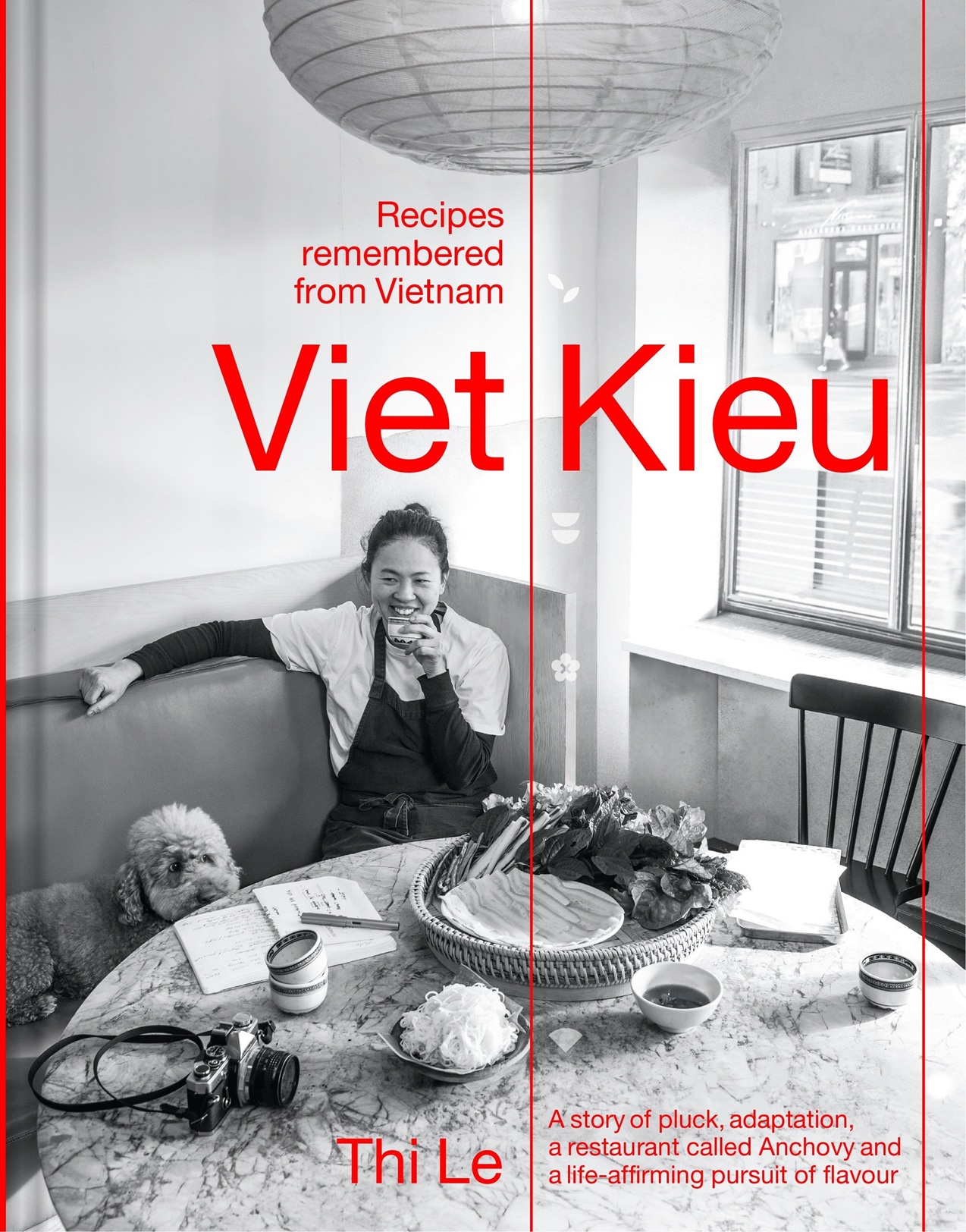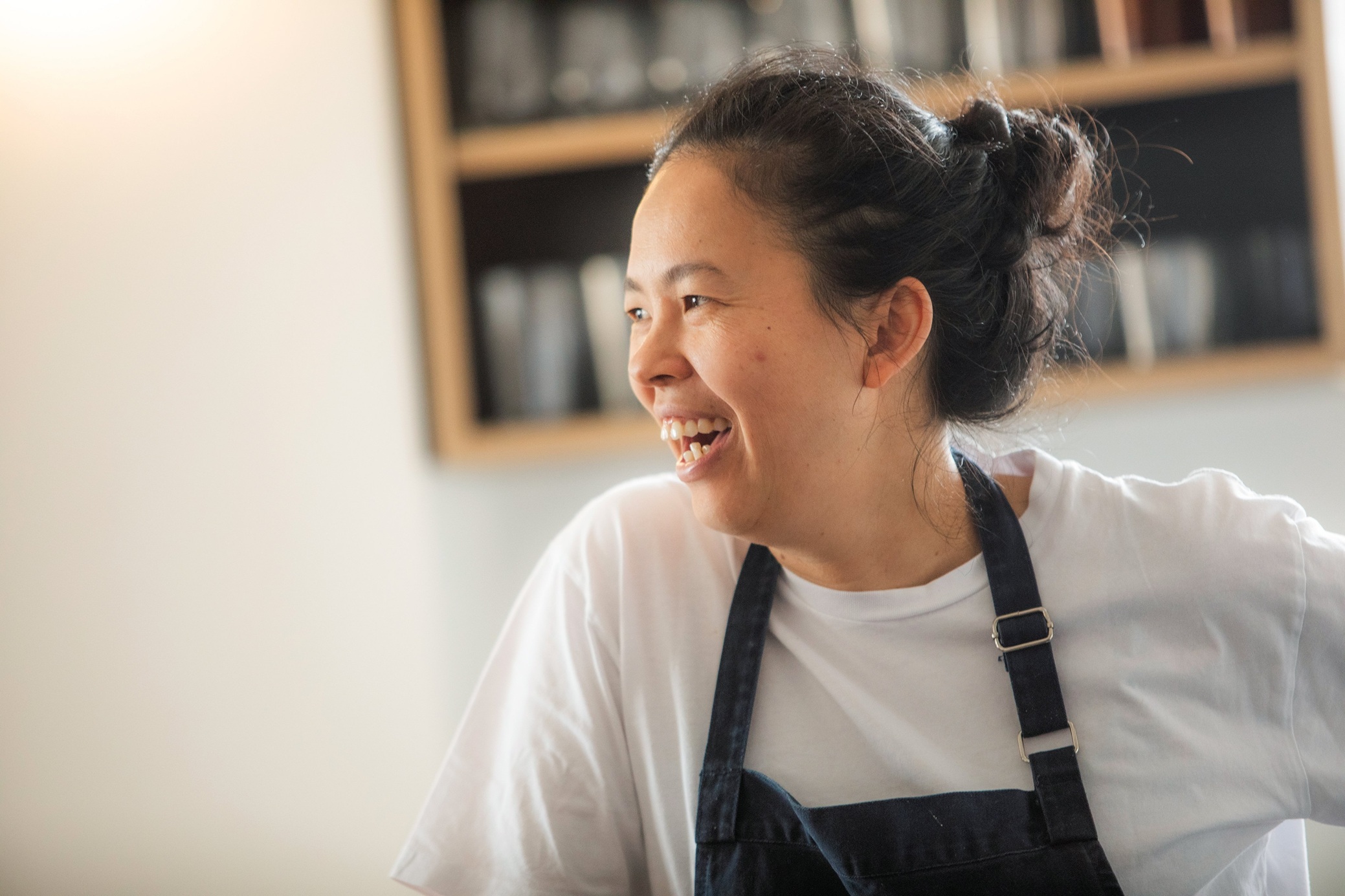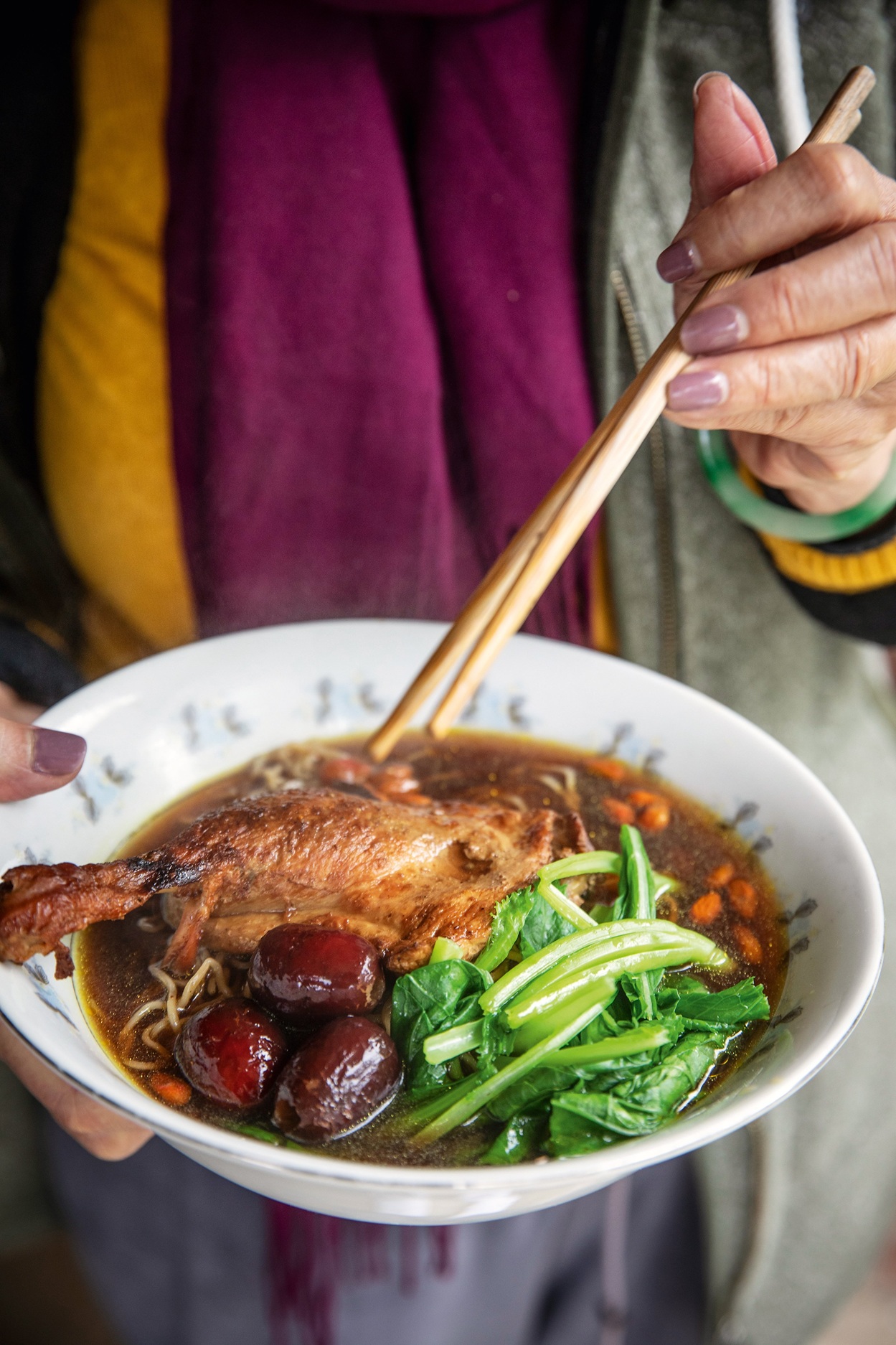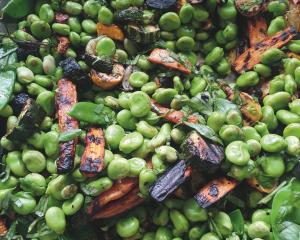
Her escape was cooking. While growing up she carried a deep loathing of food associated with her Vietnamese heritage, she came round to celebrating it.
"Her self-expression and self-discovery have been articulated as recipes, the tool of her trade," her partner in business and life Jia-Yen Lee says.
The dishes in the Melbourne-based chef’s book Viet Kieu — which means "person of Vietnamese ancestry living abroad; foreigner in a familiar country" — reflect the essence of Vietnamese cuisine, produce, locality, adaptability and freshness.
"This book has allowed me to use the tools of my trade as a chef-restaurateur to explore dimensions of both my Vietnamese ancestry and identity that the rigidity of a restaurant did not always allow," Le says.
The book is peppered with stories about her food journey — she is owner of restaurants Anchovy and Jeow in Richmond and co-owner of a banh mi bar — upbringing and travels, some of it is hard reading as life has not been easy for Le as she navigated her place between two worlds while never feeling truly at home in either one.
"My food is neither native nor adopted, but simply reflects a Vietnamese identity naturalised in Australia. This book tells that story of adaptation and preservation."
So Le is on an ongoing journey to catalogue and learn about Vietnamese dishes and cooking techniques, which she combines with a reverence for produce and locality even if it yields unexpected substitutes.

Le, who won Gourmet Traveller’s Chef of the Year award in 2022, says the foundations of Vietnamese food are informed by its history, geography and ethnic tribes, which date back to the 10th Century BCE.
"The Vietnamese pantry is very much a product of its past and geography, of its ethnic groups and their connection with the land, of historical trade and invasions of its early Chinese influence then later French and American ties, of regional variations informed by climate and topography."
She believes it is an essential skill for a cook to be able to differentiate and understand ingredients as they become more sour, spicy and bitter and how sugars develop through fruit or how they alter and mellow through the processing of caramelisation.
"One of my pet hates is rancid acid. It rears its hideous head in poorly executed Southeast Asian dressings and, unfortunately, the odd cocktail — puckery acid without the brightness."
In the book she includes an extensive list of sauces, spices, oils, ferments and herbs that form her pantry, most available at Asian foodstores, to help understand the recipes.
The book
Images and text from Viet Kieu by Thi Le with Jia-Yen Lee, photography by Mark Chew. Murdoch Books RRP $59.99
 Crispy egg noodles with seafood
Crispy egg noodles with seafood

A staple dish across the menus of Melbourne’s Viet-Chinese eateries. The good versions are stuff that dreams are made of, and the questionable versions are very much questionable. I like my egg noodles straddling the apex of crisp and just softened by the heat of the sauce between the time it was spooned over the noodles to the time the dish was walked to the table. I like the sauce with just enough gloop to coat but not so much to glue. I love my seafood fresh and just cooked. I have bitten into mouthfuls of cold (sometimes still frozen) imported seafood, ammonia- or chemical-laced, often texturally lifeless. I will take the natural sweetness and the tactile snap of a wok-licked local prawn any day.
Serves 12
Ingredients
200g fresh egg noodles
60ml vegetable oil, plus
1 tsp for noodles
20g ginger, peeled and sliced
2 red Asian shallots, sliced
2 garlic cloves, minced
6 spring onions (scallions), white parts
cut into 5 cm batons
150ml chicken stock or water
60g squid, cleaned, cut into chunks and
lightly scored in a crosshatched pattern
23 prawns (shrimp), shelled and deveined
60g firm white fish fillets, such as John
dory or barramundi, cut into chunks
70g broccolini (tenderstem broccoli), cut
into chunks
30g Chinese celery, cut into 5cm batons
Slurry
1½ Tbsp cornflour (cornstarch)
3 Tbsp cool water
Sauce
1 Tbsp soy sauce
1 tsp fish sauce
1 tsp oyster sauce
Pinch of raw sugar
Pinch of cracked white pepper
Prepare the noodles
Loosen the fresh noodle pucks, then blanch in boiling water for about 50 seconds. Rinse under cold water until cool, vigorously shake out any excess water, and let drain. Set aside. Make the slurry
In a small bowl, combine the cornflour and cool water, mixing well until smooth. Set aside. Make the sauce
Combine all the sauce ingredients in a bowl, stirring until dissolved. Set aside.
Fry the noodles
Heat the 1 teaspoon of oil in a large wok or frying pan over high heat, then reduce to medium. Add the cooked noodles, spreading them out evenly. If they start to stick, add another splash of oil.
Once the noodles start to char, flip them to char the other side. Be careful not to burn them.
Transfer the crispy noodles to a plate and keep warm. Rinse and wipe out the wok. Cook the seafood and vegetables
Heat the 60ml (¼ cup) of oil in the wok over medium heat. Add the ginger, shallot, garlic and spring onion batons; stir-fry for 1 minute until fragrant.
Add the stock and bring to the boil. Add the squid, prawns and fish, stirring occasionally for 2 minutes.
Add the slurry and sauce mixture, along with the broccolini. Stir fry for 2-3 minutes until the broccolini is just cooked. Remove the wok from the heat and toss in the Chinese celery.
Serve the seafood and vegetable mixture over the fried noodles.
 Pandan chiffon cake
Pandan chiffon cake

A pandan chiffon cake represents a childhood memory for many of us. Some of us scoff it balled up into a single dense morsel; others eat it slowly, mesmerised by its fragrance and lightness. Pandan is an interesting food to describe. The aroma is vanilla-like, cut with a bit of greenness. I find dog owners understand the smell innately — it is the smell of a dog’s paw pads, a sweet grassy note. I owe the development and refinement of this recipe to Kim Chin, a fellow kieu, who is as passionate about nostalgic desserts as I am.
Serves 12
Ingredients
8 egg yolks
20 g caster (superfine) sugar
100ml pandan juice (see notes)
50ml coconut cream
60ml (¼ cup) vegetable oil
¾ tsp pandan essence (available at
Asian food stores)
¾ tsp natural vanilla extract
150g plain (all-purpose) flour, sifted
2 tsp baking powder
Pinch of salt
10 egg whites
1 tsp cream of tartar
Coconut whipped cream
3g gelatine leaves (gold strength)
2½ tsp cool water
130g white chocolate bits
325ml thickened (whipping) cream
175ml (⅔ cup) coconut cream, at room
temperature
Salted coconut
200g freshly grated mature coconut
Pinch of sea salt
Make the cake
Preheat the oven to 170°C .
Place the egg yolks and 120g of the caster sugar in a mixing bowl. Using an electric mixer, whisk until light and aerated.
Whisk in the pandan juice, coconut cream, oil, pandan essence and vanilla. Stir through the sifted flour, baking powder and salt.
In a separate bowl, using clean beaters, whisk the egg whites until frothy. Gradually add the remaining 80 g of caster sugar and the cream of tartar, whisking until firm peaks form.
Gently fold one-third of the egg white meringue at a time through the yolk mixture.
Pour the batter into a large ungreased 25cm angel food cake tin. Smooth the surface. Run a skewer through the batter, then drop the tin once from a height to pop any large air bubbles.
Bake for 40-42 minutes, then check for doneness. Use your finger to gently press on the centre of the cake. If the cake springs back, then it is done. If your finger indent remains, cook a little longer.
Remove from the oven and leave to cool upside down in the tin.
Once fully cooled, remove the cake from the tin by running a sharp paring knife around the inside of the tin.
Without the icing, the cake will keep for up to 3 days in the fridge if properly covered with plastic wrap.
Make the coconut whipped cream
Place the gelatine leaves in a small bowl, cover with the water and leave to bloom for 10-15 minutes; they should form a gel-like mass.
Place the chocolate in a heatproof bowl.
Heat the cream in a saucepan over medium heat, being careful not to let it boil. Pour it over the chocolate and stir until melted.
Add the gelatine and stir until dissolved, then stir in the coconut cream.
Strain the mixture through a fine-meshed sieve and chill to set for at least 1 hour.
Whip the coconut cream to stiff peaks. Set aside.
Ice the cake
Place the cake on a rotating cake stand. Using a palette knife and the help of the cake stand, spread the coconut whipped cream all over and around the cake.
Mix the salted coconut ingredients together and sprinkle over the cake. Once iced, the cake will keep for 2 days in the fridge, but it’s best eaten on the same day.
Notes
• You can make the pandan juice by blitzing 500g pandan leaves (available at Asian grocers) with 100ml water. Strain the mixture before using.
• Pandan essence is necessary for both its aroma and aesthetics. Find it with the food colouring at the supermarket.
• The cake tin is the same one used for angel food cake, 25cm in diameter.
 Mi vit tiem (duck in medicinal noodle soup)
Mi vit tiem (duck in medicinal noodle soup)

A medicinal soup that I consider to be more invigorating and comforting than a bowl of pho. The gentle sweetness of dried fruits tends to dominate the front palate, but it is very quickly chased by a mid-palate warmth of ginger.
Serves 6
Ingredients
6 duck leg quarters
60ml (¼ cup) cooking wine
100g ginger, charred, then sliced
2 Tbsp mushroom soy sauce
1 Tbsp soy sauce
2½ Tbsp Chinese five spice
1½ tsp sea salt
1½ tsp cracked white pepper
Broth
1½ tsp cinnamon sticks
2 star anise
3 whole cloves
2 tsp coriander seeds
1.5 litres (6 cups) chicken stock
¼ onion, charred, then sliced
100g ginger, charred, then sliced
10g dried longans (available at
supermarkets and Asian grocers)
150g small daikon (white radish), peeled
and cut into finger thick halfmoons
2 bunches coriander roots, scrubbed well
40g spring onion tops
20g dried shiitake mushrooms
6 dried red dates
10g dried goji berries
2 Tbsp light soy sauce
2 tsp sea salt
To serve
450g mustard greens, chopped
Ice bath
900g fresh thin egg noodles per person,
cooked to packet instructions
Marinate the duck overnight
Rinse the duck legs under cold running water and pat dry with paper towel.
Place in a large bowl with the cooking wine and ginger.
Cover and leave to marinate in the fridge for 30 minutes.
Mix together the soy sauces, five spice, salt and pepper, then rub all over the duck legs.
Place in a large zip-lock bag and leave to marinate in the fridge overnight.
Make the broth
In a dry frying pan, toast the cinnamon sticks, star anise, cloves and coriander seeds over medium heat for a few minutes, or until fragrant.
Place in a spice infuser or wrap in muslin (cheesecloth).
Bring the stock to the boil in a large stockpot, skimming off any scum from the surface.
Add the toasted spices, onion, ginger and longans, then leave to infuse over medium-low heat.
A gentle bubble is adequate here, as you do not want the stock to reduce.
Pan-fry the duck
While the stock is infusing, pan-fry the duck in batches over medium-high heat for 2 minutes on each side, just to seal the meat; you are not aiming to cook the duck at this point.
Set aside.
Finish the soup
After the broth has infused for about 1 hour, add the daikon, coriander roots, spring onion, shiitake mushrooms, dates and goji berries.
Stir in the soy sauce and salt.
Add the duck legs and simmer for another 30-45 minutes. (I like my duck legs to still have some texture to them.
You can cook them further, if you wish in which case, I would start cooking the duck legs in advance of the daikon, dates and goji berries, as these will fall apart with longer simmering.)
You are aiming for a clear stock, so ensure the broth does not come to a rapid boil at any point, as this will introduce Impurities and turbidity.
To serve
Blanch the mustard greens, refresh in the ice bath and divide among the servingbowls, along with the cooked noodles.
Ladle the hot broth over the noodles, together with a duck leg, and some daikon and shiitake mushrooms. Serve immediately.
Note
• If you have them, you can use confit duck legs for this recipe. You may just want to tweak the amount of soy sauce used, as the confit duck will be more salty.
• Charred onion/ginger/chilli/shallots: leave the skin on and skewer smaller pieces together, start on medium high-heat on stove or barbecue and char on each side. It will feel like you are cremating them but char them further than you think you need to. Once cooled, the skins should slip away easily.












